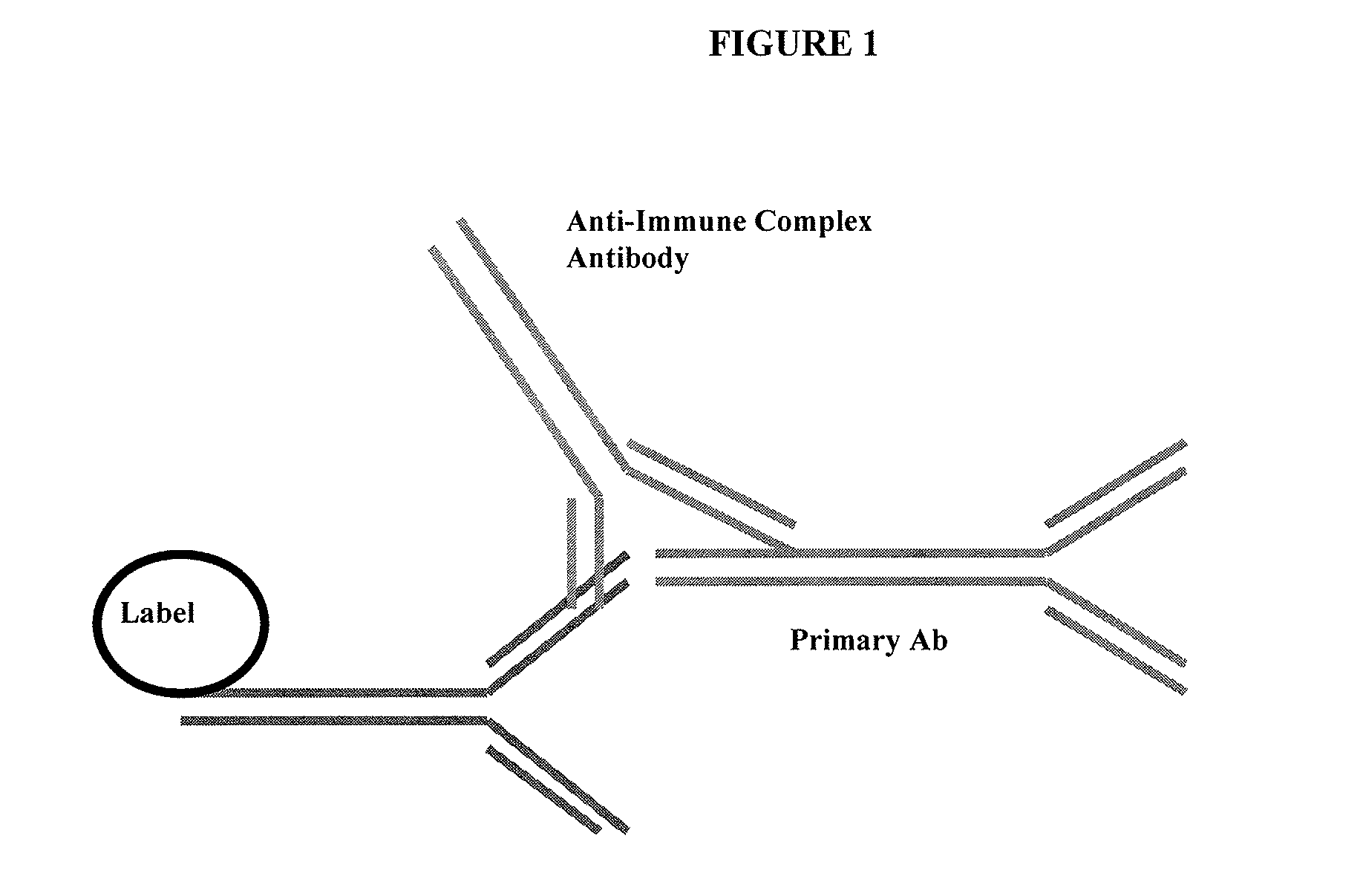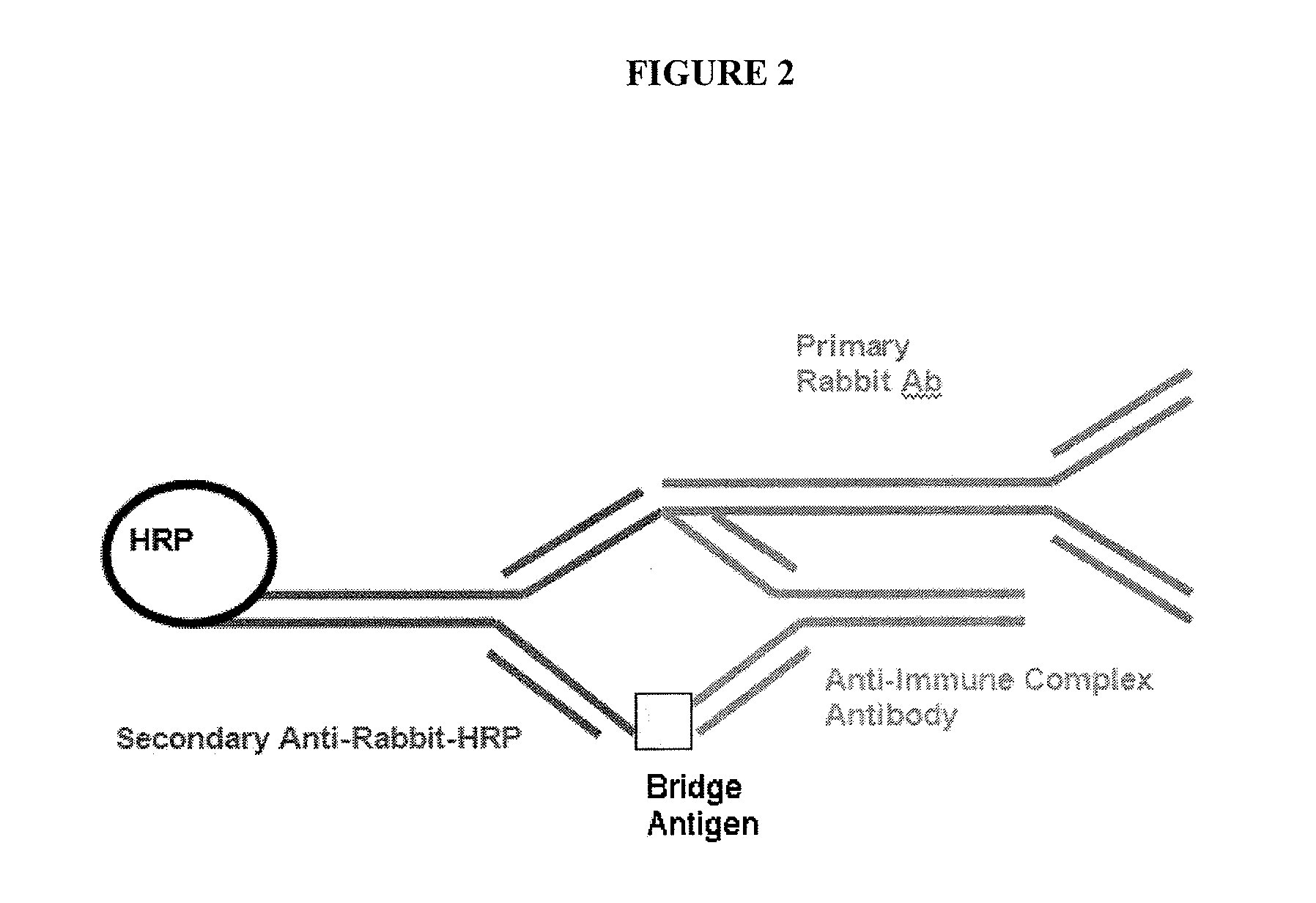Anti-immune complex antibodies
a technology of immune complex and complex, applied in the field of immune complex antibodies, can solve the problems of loss of specificity, high background, and difficulty in identifying specificity, and achieve the effect of extending the life-span of immune complex and reducing dissociation
- Summary
- Abstract
- Description
- Claims
- Application Information
AI Technical Summary
Benefits of technology
Problems solved by technology
Method used
Image
Examples
Embodiment Construction
I. Introduction
[0019]Provided herein are anti-immune complex bispecific antibodies, immune complexes stabilized by such bispecific antibodies, methods of generating anti-immune complex bispecific antibodies, and immunoassays that use such bispecific antibodies, e.g., for improved sensitivity and / or specificity.
[0020]The presently described anti-immune complex antibodies can be used for any primary-secondary antibody immune complex, e.g., those with labeled secondary antibodies. The same anti-immune complex (AIC) antibody can be used with any assay involving the same secondary antibody specific for primary antibodies from a particular species. The AIC antibody can also be designed to be specific for more than one secondary-primary antibody pair. For example, the AIC antibody can be generated to recognize an epitope shared by all rodent primary antibodies, and an epitope shared by all anti-rodent secondary antibodies, or, e.g., all secondary antibodies from a particular species.
[0021]...
PUM
| Property | Measurement | Unit |
|---|---|---|
| affinity | aaaaa | aaaaa |
| length | aaaaa | aaaaa |
| affinities | aaaaa | aaaaa |
Abstract
Description
Claims
Application Information
 Login to View More
Login to View More - R&D
- Intellectual Property
- Life Sciences
- Materials
- Tech Scout
- Unparalleled Data Quality
- Higher Quality Content
- 60% Fewer Hallucinations
Browse by: Latest US Patents, China's latest patents, Technical Efficacy Thesaurus, Application Domain, Technology Topic, Popular Technical Reports.
© 2025 PatSnap. All rights reserved.Legal|Privacy policy|Modern Slavery Act Transparency Statement|Sitemap|About US| Contact US: help@patsnap.com


